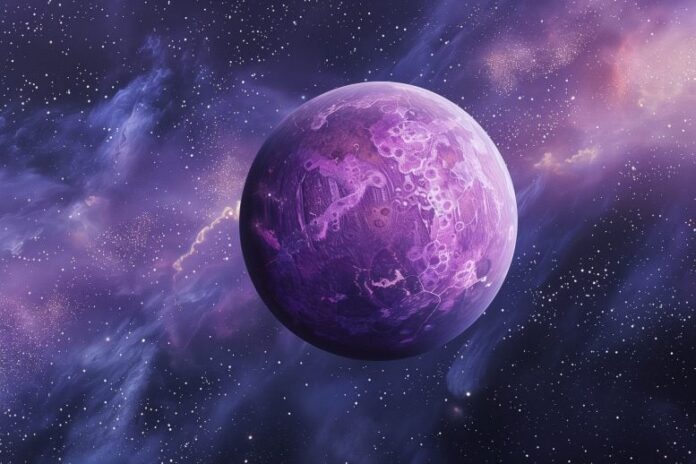An article authored by scientists from Cornell University has been published in the Monthly Notices of the Royal Astronomical Society. It is entitled “Purple is the new green.”
Why is purple referred to in this way? The article focused on the search for biosignatures on exoplanets. It noted because anoxic and oxic environments are conducive to purple-coloured bacteria, terrestrial-type exoplanets may have an abundance of this type of life. This would widen the search for extraterrestrial life.
To date, we have catalogued over 5,500 exoplanets. Finding biosignatures on any of these worlds usually involves looking for conditions similar to what we have here on Earth. We talk about planets in the Goldilocks Zone of star systems. These environments are not too hot, not too cold, just right.
On Earth, photosynthesis in the presence of oxygen has given this planet a green tinge. But on planets with very little atmospheric oxygen, purple sulphur and purple non-sulphur bacteria may be colouring the landscapes.
The article makes this argument by noting that “Before the emergence of chlorophyll-based oxygenic photosynthesis, anoxygenic photosynthesis prevailed relying on bacteriochlorophylls.” These are anoxygenic phototrophs, bacteria that are non-sulphur, designated PNSB, and purple sulphur designated PSB.
PNSBs use inorganic compounds like hydrogen for energy. They are less sensitive than PSBs to oxygen and darkness and more sensitive to the presence of sulphides. PSBs prefer reduced sulphur compounds instead of water and don’t produce oxygen as a byproduct of photosynthesis. On Earth, we find these two classes of bacteria in deep-sea conditions adjacent to hydrothermal vents, or the hot springs of Yellowstone National Park. When light is absent the bacteria turn purple. At other times they appear yellow, orange, brown or red.
So what does this mean in our search for extraterrestrials? We need to change the parameters of our search through the accumulating totals of exoplanets being discovered. Our algorithms must go beyond seeking atmospheres with oxygen and planets of green hue. We need to search for the byproducts of anoxic bacteria and investigate exoplanets with colour variations that would mark their presence.
The Cornell scientists argue that purple bacteria “could dominate a wide range of environments on exoplanets.” Why? Because the environments of the planets orbiting M-stars may prove to be the ones most common in the galaxy and our Universe. M-stars also go by the name Red Dwarfs. They are abundant throughout the Milky Way accounting for 75% of the stars in our galactic neighbourhood. Most have surface temperatures cooler than our Sun’s 5,500 Celsius (close to 10,000 Fahrenheit). We are talking around 3,300 Celsius (almost 6,000 Fahrenheit).
Some astronomers add Brown dwarfs to the M-star category, although as I have previously written they are also called failed stars because their masses are insufficient to trigger fusion and have limited luminosity. Their masses, however, are large enough to have exoplanets circling them.
Other M-stars aren’t dwarfs. These are M-giants. Iname four:
- Betelgeuse is pronounced “beetle juice,” a name with a cinematic context. Betelgeuse has been featured in studies recently because it has dimmed and brightened several times. Some astronomers conjecture that it may go supernova very soon.
- VY Canis Majoris is a Red Giant, a thousand times bigger than our Sun.
- VV Cephei is a binary star system combining a cool Red Giant and a hot blue-white partner.
- Antares is another binary star system with a massive cool Red Giant and hot blue-white companion.
Even around these Red Giants and the binary systems described above, we are discovering exoplanets.
The Cornell scientists believe that stars that appear as red may prove ideal candidates for purple bacteria to thrive. The stars emit red and infrared light and purple bacteria thrive in its presence. In contrast, the light from the Sun’s spectra encompasses the full rainbow of colours which allows our planet to host both green and purple bacteria.
So far, no biosignatures have been detected on any exoplanets. But by changing the parameters and conditions of our searches to reflect the preponderance of red and infrared-emitting stars, we may improve our odds. That’s why the colour purple may just become the new green when it comes to searching for extraterrestrials.









